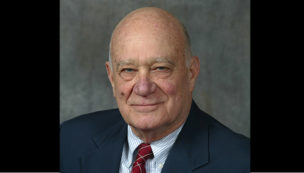“I’m not a library person,” a very bright 80-something man said to me when he phoned to discuss my recent columns regarding quests for joy in old(er) age.
We chatted on the phone and agreed to meet for a Socratic café to explore this matter in more depth.
I will comment later on why he and others might be disinclined to seek the multiplicity of delights at our North Shore’s extraordinary public libraries.
However, make no mistake: our Long island libraries are treasures of our nation, and of the world. That view has been marvelously punctuated in a new book “Palaces for the People: How Social Infrastructure Can Help Fight Inequality, Polarization, and the Decline of Civic Life.”
The founder of American public libraries (perhaps the greatest American of all time) Benjamin Franklin would be exceedingly proud of the humane perspicacity offered by author Eric Klineberg, a professor of sociology at New York University.
Like Franklin, and Richard Harwood (my pal from Kettering Foundation projects), Klineberg shows that public libraries can be unique places for “planned serendipity” — as well as for unplanned journeys of discovery.
My fellow elder who said he was not a library person felt a kind of unease (as we all may be likely to experience) about going into new places where he may know few to zero other folks.
No matter how socially adept any of us are, there is a natural inclination to have comfort levels of association with folks we know, and with whom we share interests and values.
However, the risks of new ventures can be minimized (to a point of eliminating them) by the attitudes and interactions of the folks who staff libraries, as well as by speakers for programs and by the citizens who participate.
It has been my great pleasure to prepare programs for a few dozen public libraries, often once a month (expanding for decades; at East Meadow Library where I began in 1967, and now for 51 years, with a program at 1 p.m. Thursday, Sept. 27).
My goal has been to avoid being “a sage on the stage,” pontificating to others. Instead, I strive to welcome interactive conversations with folks who attend.
I ask those who comment to give their first name. From such beginnings I have formed friendships that span decades — and so have other folks who have been at libraries, and who continued discourses (after sessions ended) that had been started by another person’s comments.
Such frequent occurrences represent a form of community building. Even when I and others do not share views and judgments, an atmosphere of mutual respect and civility enhances continuing dialogues (instead of “ego speak” duologues).
Let me not lose sight of the full meaning of the title for this column. Libraries are also places where people dance — even with others they did not meet until the music began.
Prominently displayed in a recent edition of Newsday were two elders, smiling and fondly glancing at each other as they danced at Farmingdale Library. My favorite library dance scenarios have been inter-generational square dances.
If you have ever experienced square dancing, you recognize that it is a highly social experience; folks are literally in touch with others as they proceed with various partners.
To observe young and older folks connect in this way is a path to warmth and the prospect of expanded civic engagement.
A glance through programs from our Long Island libraries immediately reveals so many cultural, social and intellectual programs that one would be challenged to select from festivals of delight.
I know several elders who arrange much of their social lives according to what is taking place at various libraries.
Then they have three additional positives: 1) the programs are free; 2) they can notify friends to participate with them; and 3) they can make new friends at the libraries (especially if they participate regularly in some of the on-going series of monthly programs where the same speakers are there, and so are folks interested in the topics on a sustained basis).
The late Saul Sacks of Great Neck made many friends at libraries. He also learned memoir writing, and he published an exceptional book, “Half a Life Time.”
Everyone can tell a story of his or her “becoming” — check out your library to launch your own literary journey. That could be a fine legacy for your family.
Manhasset Library Trustee Judith B. Esterquest, in a recent essay, reinforced highlighting of the values of public libraries by Blank press reporters after some myopic writers at Forbes Magazine said they were obsolete and not worth the tax money. Ms. Esterquest’s headline spoke volumes — “Libraries: Civic spaces that unite, inform.”
Most North Shore folks know that our area was called “the gold coast of America.” Into the 1920s, from Little Neck Harbor to Huntington Bay, land above Northern Blvd. was zoned for 50 acres plots.
There is still much affluence in our region, but the more than 100 public libraries in Nassau and Suffolk counties provide a vital gold standard for citizenship and community.
In the future, I’d love to see more public library focus on intergenerational programs —perhaps starting with square dancing!



